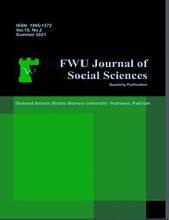Contours of connectivity: Socioeconomic transformation and local perception of China Pakistan Economic Corridor (CPEC) in upper Hunza, Pakistan
Keywords:
CEPC, Socioeconomic impacts, Economic transfermation, Local perceptions, HunzaAbstract
The study focuses specifically on understanding how residents perceive both their changed livelihood situations and their ability to access development advantages while expressing worries about cultural and environmental sustainability factors. The study employed a quantitative survey design with a cross-sectional approach. The researcher obtained data through multistage cluster sampling from residents located in Sost and Passu settlements. Research data was collected through both digital and face-to-face distribution of a structured questionnaire, which used a five-point Likert scale. The data collected from 220 respondents yielded 200 valid results that underwent statistical description. The survey respondents showed both positive and negative feelings. The widespread view that CPEC drives economic growth and better connectivity also reveals several negative implications, including environmental damage and cultural loss, and a lack of participation in decision-making processes. Both positive and negative aspects of CPEC receive widespread acknowledgment from respondents with scores higher than 3.00 on important scales. Numerous analysts view the CPEC project as having two major effects: it drives regional development, but concurrently threatens local cultural practices and puts residents at risk of non-inclusion. The analysis demonstrates how development plans must integrate native valuations with impartial community involvement. Through this study, critical development sociology gains new insights by including the mountain population perspective, which is typically absent in large-scale infrastructure development planning processes. The research promotes culturally sensitive strategies for megaprojects through future development.

